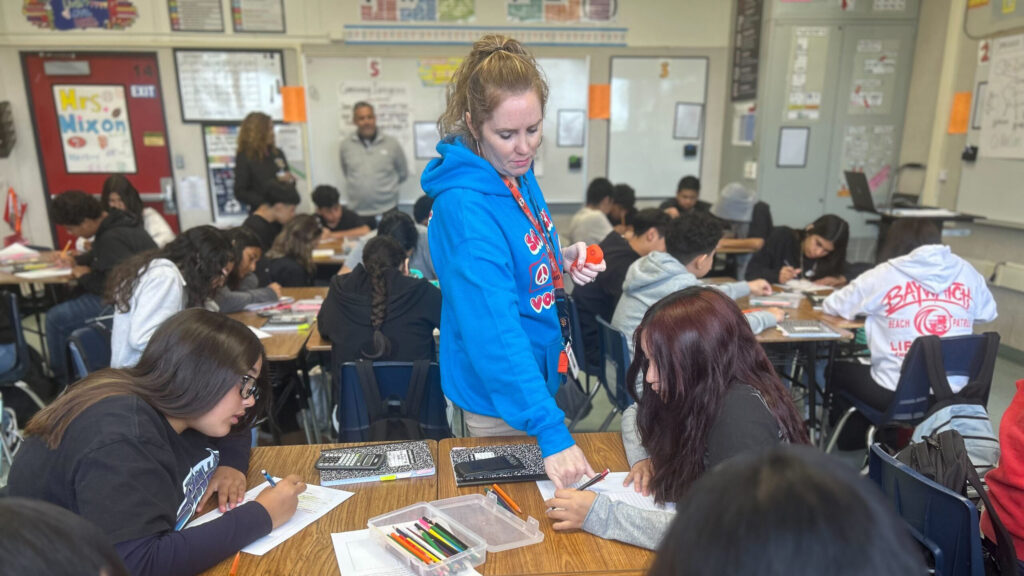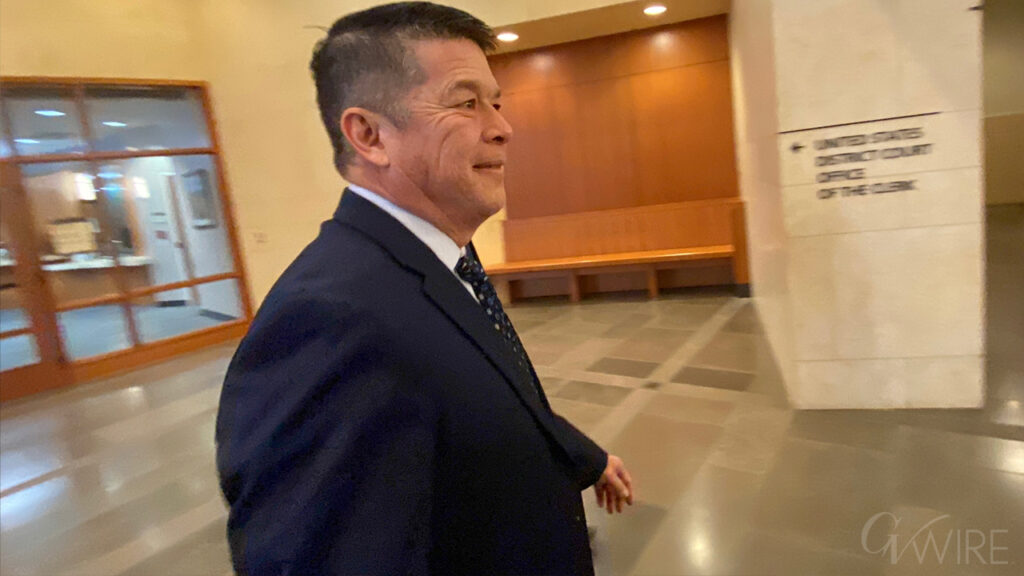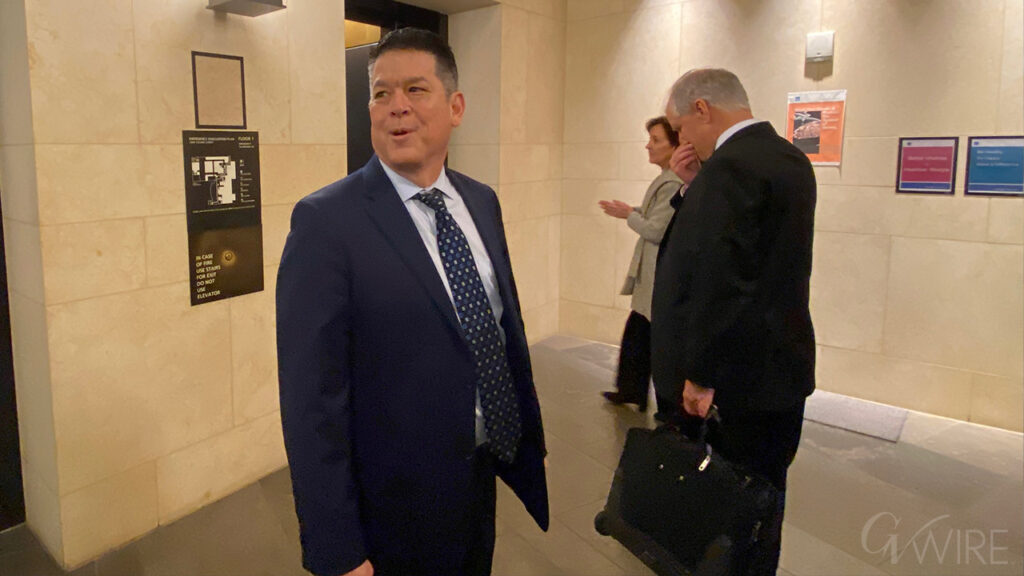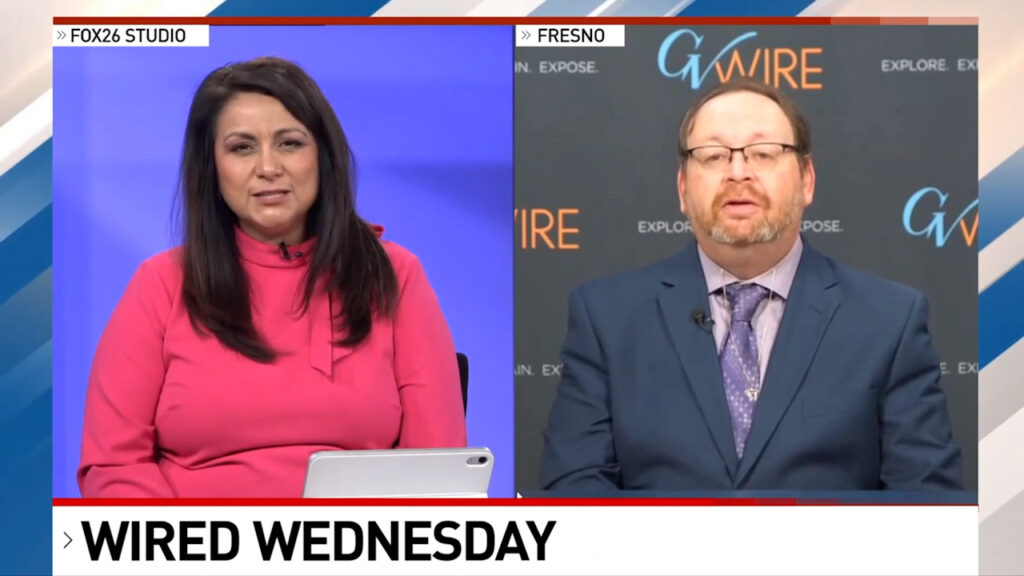Washington Academic Middle School math teacher Samantha Nixon walks around the class, providing feedback to students about the different strategies they used to solve a problem, Oct. 16, 2025, in Sanger. (EdSource/Lasherica Thornton)

- Once an underperforming school district, Sanger has ranked higher in English and math proficiency than the state over the past decade.
- About 53% of Sanger Unified students demonstrated proficiency or above in English compared to nearly 49% statewide.
- In math, 40% were proficient or above compared to 37% of students statewide.
Share
|
Getting your Trinity Audio player ready...
|
At Washington Academic Middle School in the Sanger Unified School District, students in Samantha Nixon’s eighth grade math class recently tackled how to organize and tabulate a large fast-food order.
“Start chatting in your groups. How many hamburgers did he order altogether?” Nixon asked the students.
The students noisily debated the math problem, including whether a large Coke and a large Sprite should be counted together.
“Six, seven, eight; that’s eight,” one student proudly counted aloud. “He wants two more (hamburgers with everything), that’s 10. That’s 11. And then that’s 13. So, 13 hamburgers.”
Nixon’s classroom commotion is part of Sanger Unified’s educational process. The instructional approach involves engaging students “through chitter-chatter.”
“We don’t need quiet classrooms,” said Principal Pete Muñoz.
This kind of engaging instruction appears to be paying off for Washington Academic and for the Fresno County school district, which has nearly two dozen schools with over 13,000 students.
On the most recent state assessment, recording a 10-point increase in English scores, struggling Washington Academic outpaced the state’s improvements in English and math. Once an underperforming school district, Sanger has ranked higher in English and math proficiency than the state over the past decade.
About 53% of Sanger Unified students demonstrated proficiency or above in English compared to nearly 49% statewide. In math, 40% were proficient or above compared to 37% of students statewide.
The district still has strides to make, including students reaching their pre-pandemic math scores and schools better informing parents about what the scores mean, district and school leaders said. But the district’s unwavering focus on student growth and the schools’ approach to engage and motivate all students may be an example for other districts.
“We say that, ‘Every student that’s in front of me, I’m going to make them better,’” said Tim Lopez, the district’s associate superintendent of educational services.
Same Goals, no Matter What
It wasn’t always this way. Twenty years ago, Sanger Unified was ranked at the bottom in state English and math test scores. Then, the district set goals, which it continues to maintain, to focus on academic growth and to increase student achievement.
How Educators Learn
Every Wednesday, educators across Sanger Unified schools and at the district level meet in professional learning communities to address four key concepts:
- What do students need to learn?
- How do educators assess student learning?
- (In analyzing student data), who understands instruction and who doesn’t?
- What do educators do if students don’t learn, including improving their teaching?
According to Lopez, the same actions that brought the district out of improvement status in the early 2000s were used to respond to pandemic-era learning loss: weekly professional learning communities with educators working collaboratively rather than in isolation and effective instruction determined by teachers and administrators.
Following the pandemic, the district also strengthened its education around social-emotional well-being and its support systems that identify students and provide different levels of academic and behavioral resources. The district added wellness coaches to each elementary school, psychologists to all campuses, and special-assignment teachers for academic support and intervention.
“We doubled down on not buying things but rather support for kids to enable (us) to get back to where we were,” Lopez said.
As a result, the students’ English scores have returned to pre-pandemic levels, and math scores are off by less than 3 percentage points.
Balanced Instruction: ‘We Are All Writing Teachers’
A key component of Sanger’s instructional approach is academic discussion between students, Lopez said. Students explain their thinking and justify their answers to each other.
“(They) understand problems at more than the surface level,” Lopez said.

Student engagement is what made the difference at Washington Academic, where proficiency grew by 3.6 percentage points in math from 28% to 32% of students meeting or exceeding standards.
The entire school also focuses on writing, even in math classes.
“We are all writing teachers,” Muñoz said about a culture shift at the school.
Requiring writing as well as reasoning and critical thinking in math — and all other classes — improved English scores, school leaders said. Washington Academic saw a 10.4 percentage point jump in English scores, bringing proficiency from nearly 35% to 45%.
The focus on writing has “really helped push language arts those 10 points,” said Albert Gallardo, the vice principal overseeing math and social studies.
What Scores Mean
State assessment results measure student achievement, which families can use to monitor their children’s growth and progress in the public school system — if they understand them.
How Instruction Looks
Sanger Unified classroom instruction:
- Fosters a safe, inclusive learning environment that promotes student engagement
- Highlights academic vocabulary, such as how Washington Academic teacher Samantha Nixon reminded her students that “another” cheeseburger or “a” hamburger means one more
- Connects with students through relevant content, such as how the activity on fast food is relevant for eighth graders at Washington Academic Middle School
Thanks to the approach, some Sanger schools saw double-digit gains, district leaders said.
For instance, at Reagan Elementary, math scores rose by 10.6 percentage points from 48.5% to 59% of students meeting or exceeding state standards.
One Sanger Unified parent says the district doesn’t do enough to educate parents about the significance of the results. “Some parents can’t understand because they don’t explain it,” said María Gonzalez, a parent of four students in middle school and high school.
Upcoming parent-teacher conferences and campus events are ways schools can better communicate with parents about scores, district and school leaders said.
While parents may not be as aware of the importance of test scores, students are.
With the district goal of every student advancing at least one grade level each year, or more if they’re behind, the goal translates down to the school and principal, to the teacher and to the student, Sanger Unified Superintendent Dennis Wiechmann said.
That meant that before the test, Washington Academic made sure students were aware of what the tests and scores would mean, according to Elvira Ledezma, a curriculum support provider for English. Under the theme “Going for Green,” the color that denotes proficiency on the test, the school displayed posters around campus with Principal Muñoz depicted as the green “Shrek” character, offered incentives, and encouraged students.
“Your score matters,” Muñoz recalled of the daily announcements. “We need your best.”
Students knew where they started and how much they needed to grow, said Gallardo, Washington Academic’s vice principal. And they were motivated to get there.
“It really warms my heart and brings a smile to my face when I see a kid that is celebrating their win,” he said. “And if it’s not a win, they know that they’re going to get it the next time.”
About the Author
Lasherica Thornton covers education in California’s Central Valley. Follow her on X @LashericaT
RELATED TOPICS:
Categories

US, Iran Spar Over Nuclear Talks at UN


















